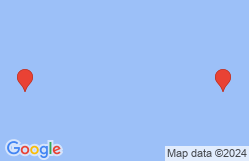 Peña Eye Institute has established itself as one of the premiere laser eye surgery centers serving the greater McAllen area. We offer state-of-the-art custom LASIK and other advanced vision correction options. Using the latest technology allows patients to experience the best vision possible.
Peña Eye Institute has established itself as one of the premiere laser eye surgery centers serving the greater McAllen area. We offer state-of-the-art custom LASIK and other advanced vision correction options. Using the latest technology allows patients to experience the best vision possible.
It's important to us that prospective patients understand the risks of LASIK, however, so they have realistic expectations about the process. That said, let's consider flap complications, which can be serious if they occur and are not dealt with promptly.
What is a flap complication?
To understand flap complications, let's quickly note an important part of LASIK surgery.
During LASIK, a small flap is created in the topmost layer of the corneal, which is known as the epithelium. By moving this top layer of the cornea back, a LASIK surgeon can then reshape and recontour the corneal surface and improve the passage of light through the eye.
Once the corneal reshaping is commplete, the flap is set back down. Flaws in the healing of the flap are referred to as a flap complication. Flap complications can cause soreness, eye pain, and even problems with your vision.
Types of Flap Complications
Some potential flap complications that may occur include the following:
-
Irregular Astigmatism – This flap complication occurs when the flap heals in an uneven or curved manner after it is set down.
-
Epithelial In-Growth – This flap complications occurs when cells on the outside of the epithelium wind up growing inside the epithelium.
-
Diffuse Lamellar Keratitis (DLK) – This is a type of inflammation that occurs just under the corneal flap and has been nicknamed "sands of the Sahara" by some eye care specialist, giving you an idea of the discomfort and how serious it is.
-
Keratoconus/Keratectasia – This flap complication involves the outward bulging of the eye into a slightly conical rather than round shape.
How common are flap complications after LASIK?
Thankfully flap complications after LASIK are relatively rare, and they can be prevented through careful surgical training and the use of advanced technology as well as proper aftercare on the part of patients.
Treating Flap Complications
If a flap complication occurs, many times it can be remedied thanks to a corrective procedure. Some flap complications will require a secondary refractive operation in order to improve corneal contour.
During the healing process, patients are encouraged to contact the practice if they experience issues with major pain and discomfort as part of recovery. This will allow a potential flap complication to be treated sooner rather than later.
Pre-Op and Post-Op Instructions Help Prevent Adverse Side Effects
Patients are given detail post-op instructions as well as pre-op instructions in order to ensure their healing is as free from problems as possible. Patients should follow these instructions closely and attend all follow-up visits as instructed.
Advanced Techniques and Technology Help Us Avoid Complications
In order to further reduce chances of any complications during LASIK and as patients heal, we use advanced and precise technology that reduces human error and improves our ability to offer advanced eye care. This includes digital mapping of the corneas as well as computer-guided all-laser LASIK to ensure that the flap that is created is as perfectly formed as possible.
Learn More About LASIK Surgery
If you would like more information about LASIK and how it can enhance your vision and overall eye health, be sure to contact our laser eye surgery and vision correction center today. The entire team at Peña Eye Institute looks forward to your visit and helping you make smart choices about your overall health and wellness.

